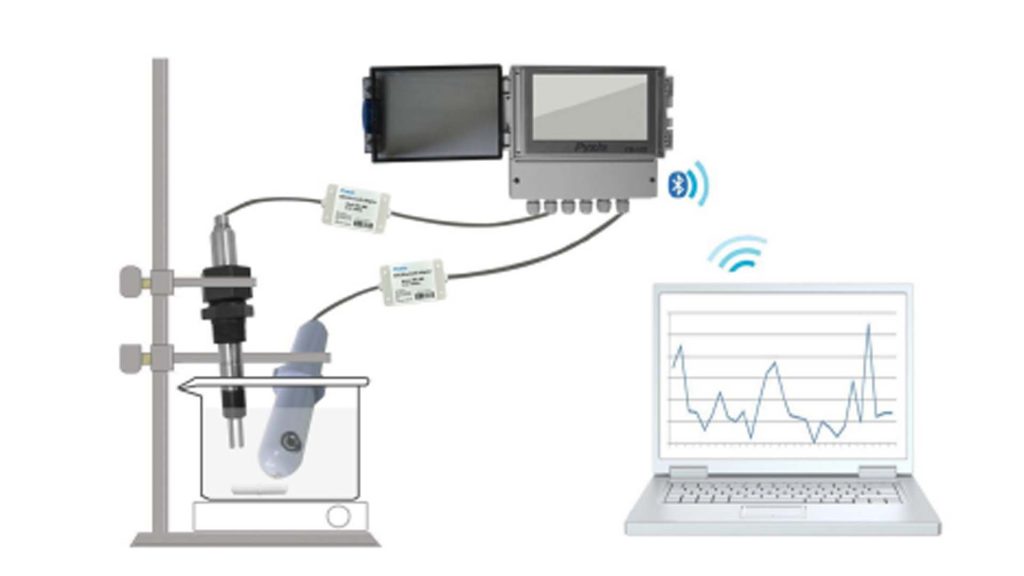A Short Laboratory Demonstration
Approach Summary
The Pyxis Lab® inline azole sensor (ST-565/T) is a valuable tool in the study of copper corrosion and azole chemistry in the presence of chlorine. The Pyxis Lab® Corrosion Sensors (CR-200 / CR-300) can accurately measure corrosion rate down to 0.001MPY. It is ideally suitable for measuring copper corrosion rate below 0.01MPY in applications where the lower ppb level of copper discharge to the environment or extreme anti-corrosion protection is concerned. Combining these two tools, however, can offer a unique opportunity to uncover the azole chemistry in an actual application situation that would be very difficult to study by analyzing azole and copper concentrations in grab samples. This note is to describe a quick laboratory experiment. A high dose of 50ppm Chlorine is used to obtain results in short time.
Setup
Add 0.2g Na2CO3 to 2,000mL of deionized water in a beaker. Adjust pH to 7.2 with 1M H2SO4. The resulting solution has a Conductivity value around 2,500µS/cm. Insert a ST-565/T sensor & a CR-Series sensor – equipped with two copper electrodes – into the beaker. The solution was modestly stirred with a magnetic stirring bar. The sensor readings were recorded by a computer via a Bluetooth® connection.

Result
Figure 2a. below shows the corrosion rate while figure 2b. shows the azole concentration. The initial corrosion rate was about 0.005MPY. The Corrosion Rate decreased to about 0.002MPY upon adding 1ppm TolyTriazole (TTA). The corrosion rate rapidly increased to 0.04MPY and the azole ppm value measured by the ST-565 probe dropped to near zero after an aliquot of 50ppm Sodium Hypochlorite was spiked to the 200mL solution. The up and down swings in figure 2a were due to stirring interruptions.

Observations
Figure 3a shows the Corrosion Rate while Figure 3b shows the Azole concentration. The initial corrosion rate recorded was about 0.005MPY. The Corrosion Rate decreased to about 0.002MPY upon adding 1ppm of Halogenated Tolytriazole (HST). The Corrosion Rate rapidly increased to 0.07MPY and the azole ppm value measured by the ST-565T probe dropped a non-zero value of 0.25ppm after an aliquot of 50ppm Sodium Hypochlorite was spiked to the 2,000mL solution.

Comparing the results in Figure 2 with Figure 3 reviews clearly that halogenated TTA is much more stable than TTA in the presence of a large dosage of chlorine. The copper corrosion rate in the water containing 1ppm HST is significantly less than that in the water containing 1ppm TTA.
Conclusion
This short note demonstrates simultaneous monitoring azole residual with Pyxis ST-565/T and corrosion rate with the CR-Series sensor. Application of this approach for copper corrosion monitoring and azole dosing control in a real cooling tower environment is of great value to the industry.



